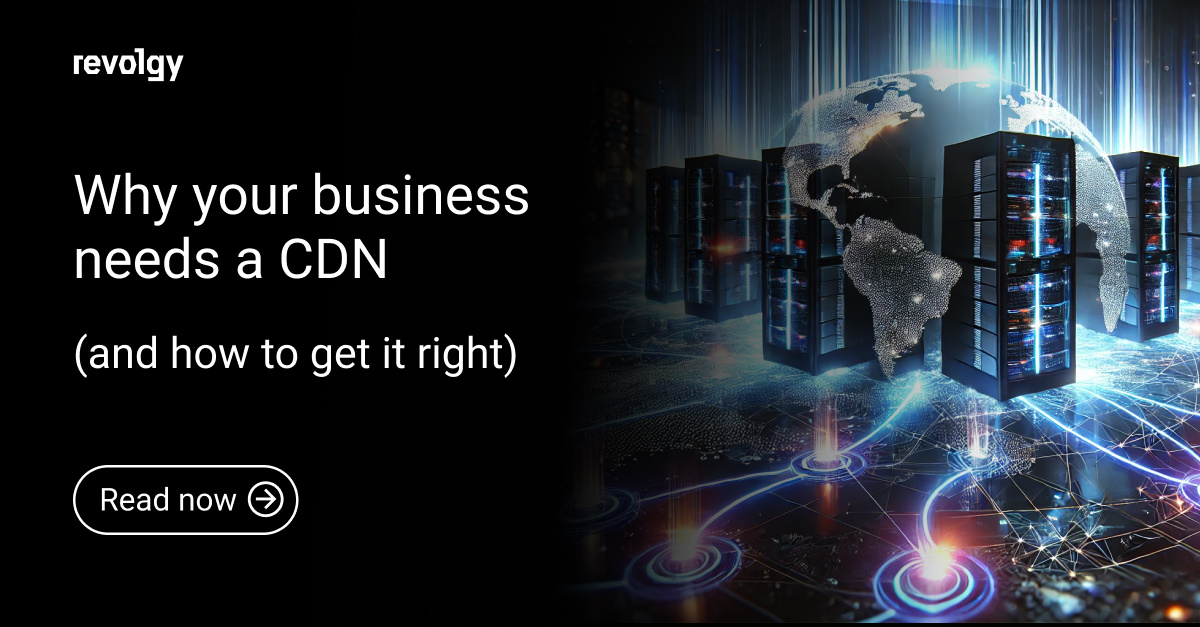Professional Services, Cloud Platform Services
The hidden challenges of global content distribution (and how to solve them)
Expanding into international markets sounds exciting — until your users halfway across the world get stuck waiting for your site to load. Content distribution is one of the most overlooked challenges. Whether you’re running a SaaS platform, streaming media, or managing an e-commerce store, delivering content fast and securely to users everywhere is a major technical challenge.
Businesses often struggle with latency, security risks, traffic spikes, and regulatory compliance when distributing content globally. Proper CDN strategies and global infrastructure planning can mitigate these problems. Let’s look at how to make it happen.
Even a 1-second delay in page load time can cut conversions by 7% and reduce page views by 11%. For an online store making $50,000 daily, that adds up to over $1 million in lost sales per year.
Plus, 40% of shoppers leave if a site takes more than 3 seconds to load.
Common problems in global content distribution
As your business grows, so do the challenges of delivering content worldwide. Here’s what tends to go wrong:
1. Latency issues
The farther a user is from your origin server, the slower your content loads. Users located far from your origin server will experience higher page load times, buffering, and poor performance.
This is especially problematic for video streaming, gaming, and e-commerce checkout flows, where even small delays can cost you revenue.
2. Handling traffic spikes & demand surges
Holiday sales, flash promotions, or even viral content can flood your site with unexpected traffic surges. Without proper load balancing and caching, high traffic can cause downtime, slow performance, or increased cloud costs.
3. Security risks & compliance challenges
The more places your content travels, the more exposed you are to threats like DDoS attacks, API abuse, and bot traffic. On top of that, many industries require GDPR, PCI-DSS, or HIPAA, making data sovereignty a critical factor.
4. Managing content consistency
You want every user, no matter where they are, to see the most up-to-date version of your content. But without proper cache invalidation policies, they might be served outdated content, leading to inconsistent user experiences.
How businesses solve challenges in content distribution
So, how do you keep content flowing smoothly across borders? Not every business needs the same setup, and companies have various strategies that address these challenges, including:
- Using a CDN to bring content closer to end users and reduce load times.
- Implementing intelligent caching that prioritizes frequently accessed content to reduce strain on your origin servers.
- Using edge computing to process logic at CDN locations to minimize delays and offload backend tasks.
- Monitoring traffic in real time to detect and stop threats before they impact users.
While a CDN is often a necessary component of a global distribution strategy, the way it’s configured and optimized plays a huge role in how effective it is. Every business should analyze its unique traffic patterns, security posture, and compliance requirements to create an efficient content delivery architecture.
For organizations looking to expand globally or optimize existing infrastructure, a well-defined content distribution strategy can be a key driver of performance and customer experience. Need help setting up your global content strategy? Contact us today for a free consultation.
Read next: Why your business needs a CDN (and how to get it right)

